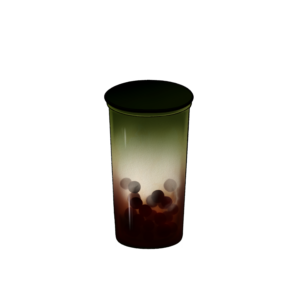By: Cristina Liao, Peak Associate
From the newly opened Yogost in UniverCity to the Gong Cha stores that can be found all over the Lower Mainland, we see this Taiwanese drink known as bubble tea, boba, or 珍珠奶茶 rapidly seep into the western world.
I have a never-ending love for this beverage. Once summer hits, the fruit-based bubble teas are my ultimate comfort drink when those study sessions start getting rough. With its numerous unique flavours like “peach soda pop” at Yi Fang and my go-to “osmanthus oolong tea” at Shiny Tea, it’s hard to imagine ever getting bored of this drink. Even if you were to order everything from the menu at one store, different shops will have their own flavours and unique takes on classics like taro.

Being one of Taiwan’s most beloved beverages, the history of bubble tea began in the late 1980s with the classic milk tea. Milk tea, shaved ice, and tapioca balls were individually popular as desserts at the time and these elements were combined to produce the first classic milk tea boba. As bubble tea became increasingly popular throughout Taiwan, “stall owners started introducing fruit boba, using fruit powders and syrups in lieu of actual fruit.”
However, this isn’t the only origin story of bubble tea. There are other claims to the true beginnings of bubble tea such as the rumour that a teahouse in Taiwan called Chun Shui Tang started selling iced tea on their menu. The manager there decided to add tapioca pudding in their drinks as a test, and ended up adding it to the menu because of how good the combination tasted. This addition became so popular that it was a bestseller for the shop’s franchise and concessions all over Taiwan began following this trend.

Although I’ve been delighted at the growing popularity of bubble tea in the western world, it sometimes feels like East Asian culture is watered-down to iconic food and drinks like dim sum and bubble tea. Childhood memories of white classmates making fun of the smell or look of my lunches contradict the love for certain East Asian foods I see now. Food can be closely linked to cultural identity, but cultural appropriation and the white gaze seem to take up too much space and overshadow this beautiful experience.
Bubble tea plays a large role in Asian Canadian culture, seeing as it has brought a newfound appreciation for our influence on Canada’s food and drink sector. As Presotea states, “For many diasporic Asians, bubble tea is a symbol of their culture.” As an SFU student, you have many options for getting this cultural beverage on our campuses. There are Xin Fu Tang and Coco stores that can be found at the Central City mall beneath the Surrey campus, as well as numerous places at SFU Burnaby, including the aforementioned Yogost. You might see me at Yogost on a hot summer afternoon enjoying the peach lychee yoghurt foam, contemplating the true origin story of bubble tea.





